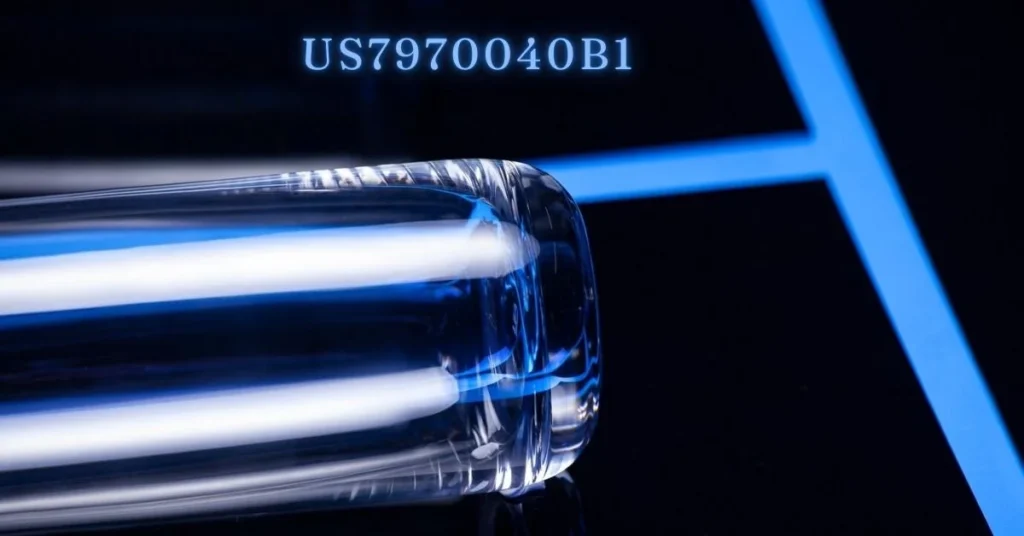Introduction
Laser technology has been one of the most transformative inventions in modern times, revolutionizing industries ranging from manufacturing to medicine. Among the breakthroughs in this field, the patent US7970040B1 stands out as a notable leap in laser precision. This article explores how this technology has redefined standards for accuracy and performance, offering new possibilities across various applications.
In today’s fast-paced environment, precision is not just a luxury—it’s a necessity. The innovative advancements introduced by US7970040B1 not only push the boundaries of what lasers can do but also pave the way for future technological breakthroughs. Let’s dive deep into the evolution of laser technology and understand how US7970040B1 is a game changer for industries worldwide.
The Evolution of Laser Technology
Laser technology started as a scientific curiosity and transformed into a foundational element in industries worldwide. The journey from the first laser to state-of-the-art systems like US7970040B1 is nothing short of remarkable.
A Brief History of Laser Innovations
From the initial discovery of stimulated emission to the development of the first working laser in the 1960s, the technology has evolved significantly. Early lasers were primarily used in research and military applications. Over time, enhancements in design and precision led to broader commercial applications, including telecommunications, surgery, and manufacturing.
Milestones in Developing Precision Lasers
Several breakthroughs mark the timeline of laser technology. Innovations such as diode lasers, solid-state lasers, and fiber lasers each contributed a critical piece to the puzzle. US7970040B1 represents one of the latest milestones, incorporating decades of research to deliver unparalleled precision.
The Breakthrough of US7970040B1
Patent US7970040B1 represents more than just an incremental improvement; it is a revolutionary step forward in laser precision. This patent encapsulates significant technological advancements that set new standards for laser performance and reliability.
Background and Context
The development of US7970040B1 is rooted in the continuous quest to enhance laser accuracy and operational efficiency. Researchers and engineers have long faced challenges related to beam stability, coherence, and energy dispersion. With US7970040B1, these challenges are addressed through novel design architectures and innovative operational methodologies.
Patent Overview and Significance
At its core, US7970040B1 encompasses a set of methodologies and designs that optimize the generation, modulation, and focus of laser beams. The patent not only addresses previous technological limitations but also introduces new paradigms in the way lasers are harnessed for both industrial and commercial purposes.
Key Technological Innovations
- Enhanced Beam Stability: One of the most remarkable features of US7970040B1 is its ability to maintain a stable beam over longer distances and under varying environmental conditions.
- Precision Control: Advanced modulation techniques allow for fine control over laser output, making this technology ideal for applications requiring high precision.
- Energy Efficiency: By optimizing the laser’s operational parameters, US7970040B1 contributes to a reduction in power consumption without sacrificing performance.
Comparative Analysis with Previous Technologies
When compared to earlier laser systems, the innovations in US7970040B1 clearly stand out. Previous models often struggled with energy dispersion and focal inconsistencies. This new approach not only resolves these issues but also extends the range and applicability of laser technology into fields that were once considered out of reach.
Technical Deep Dive into US7970040B1
For those interested in the nuts and bolts of laser technology, understanding the technical structure of US7970040B1 offers a fascinating glimpse into modern engineering prowess.
Structure and Key Components
US7970040B1 is built on a robust framework that integrates several key components working in harmony:
- Laser Source: The heart of the system, this component is engineered to generate a coherent light beam with high stability.
- Modulation Unit: This module fine-tunes the beam parameters, ensuring that the output is both precise and adaptable to different tasks.
- Focusing Mechanism: Advanced optics and dynamic focusing elements allow the beam to be directed with pinpoint accuracy, an essential feature for high-precision applications.
Operating Mechanisms Explained
The operating mechanism behind US7970040B1 revolves around a sophisticated interplay between optical elements and electronic controls. These systems work together to achieve a level of precision that was previously unattainable in conventional laser systems.
The Role of Each Component
- The laser source ensures that the light emission is consistent and powerful.
- The modulation unit adjusts the beam in real-time, responding to varying operational demands.
- The focusing mechanism ensures that the beam remains concentrated on the target, thereby minimizing energy loss and enhancing accuracy.
Integration into Modern Laser Systems
One of the standout aspects of US7970040B1 is its seamless integration into existing and new laser systems. Its modular design allows for easy upgrades and compatibility with a wide range of industrial applications, from precision cutting and engraving to advanced medical procedures.
Enhancing Laser Precision with US7970040B1
The quest for improved accuracy in laser applications has always been a driving force behind research in this field. US7970040B1 emerges as a beacon of innovation, offering clear advantages over its predecessors.
Improvements in Accuracy
The primary breakthrough of US7970040B1 lies in its ability to deliver extraordinary precision. This is achieved through:
- Dynamic modulation techniques: Allowing the laser beam to adapt in real-time to external factors.
- Feedback control systems: Constantly monitoring and adjusting the output for optimal performance.
- Improved thermal management: Minimizing heat-induced distortions that can compromise precision.
These improvements translate into a system that can operate effectively in environments where even minor deviations can lead to significant errors.
Advantages Over Traditional Laser Systems
Compared with traditional laser technologies, US7970040B1 offers:
- Higher beam coherence: Ensuring that the light remains concentrated and directed even over long distances.
- Versatile operational capabilities: Suitable for a diverse range of applications, making it a universal tool in precision technology.
- Reduced energy consumption: Efficiency improvements mean lower operational costs and a smaller environmental footprint.
Practical Applications in Various Industries
The advanced precision of US7970040B1 opens up a multitude of applications:
- Manufacturing: For tasks such as micro-machining, cutting, and engraving, where precision is paramount.
- Medical Applications: In procedures like laser surgery, where minute precision can significantly impact patient outcomes.
- Scientific Research: For experiments requiring ultra-precise laser control in fields such as spectroscopy and quantum computing.
Industry Impact and Future Prospects
The advent of US7970040B1 has far-reaching implications for various industries, marking a turning point in how laser technology is applied and perceived.
Adoption in Industrial Sectors
Industries that rely on exact measurements and high levels of precision are among the foremost beneficiaries of this technology. The enhanced control and stability offered by US7970040B1 make it an invaluable asset in sectors such as semiconductor manufacturing, aerospace, and automotive production. Its influence is already being seen in the development of more efficient and precise fabrication processes.
Medical and Scientific Applications
In the medical field, lasers are a critical component in everything from corrective eye surgeries to precise tissue ablation. US7970040B1 offers the level of precision required to minimize risks and improve patient outcomes. Similarly, in scientific research, the ability to control laser parameters with such fine detail provides researchers with a tool that can push the frontiers of discovery in fields like materials science and nanotechnology.
Future Trends and Market Impact
Looking forward, the implications of US7970040B1 extend beyond current applications. As industries continue to demand higher precision and efficiency, this technology is poised to play a pivotal role in:
- Next-generation Manufacturing: Integrating with automated systems to enhance production accuracy.
- Emerging Medical Techniques: Enabling procedures that were once thought impossible due to limitations in laser precision.
- Advanced Research Projects: Particularly in fields like quantum computing and photonics, where precision lasers are crucial.
Market trends indicate a growing investment in laser technologies, and innovations like US7970040B1 are expected to drive further research and development. Businesses that can integrate these advanced solutions are likely to lead the market in the coming years, setting new standards for what is achievable with laser precision.
Conclusion
US7970040B1 is more than a patent—it’s a transformative milestone in the world of laser technology. It encapsulates decades of innovation, offering unprecedented control, stability, and efficiency in laser applications. Whether in manufacturing, medicine, or scientific research, the advancements brought by US7970040B1 set new benchmarks for precision and operational excellence. By overcoming the limitations of earlier systems, this technology opens new avenues for advancements across a variety of sectors, heralding a future where even the most complex procedures can be executed with remarkable accuracy.
Faqs
What exactly is US7970040B1?
US7970040B1 is a patented technology representing a breakthrough in laser precision. It includes innovative designs and methods that significantly enhance the control, stability, and efficiency of laser systems.
How does US7970040B1 improve laser precision compared to older technologies?
This patent incorporates advanced modulation techniques, real-time feedback controls, and optimized thermal management, all of which work together to maintain a highly stable and precise laser output under varying conditions.
In which industries can we see the application of US7970040B1?
The innovations in US7970040B1 can be applied across multiple sectors including high-precision manufacturing, medical surgery, scientific research, and even emerging technologies like quantum computing.
What are the primary technological innovations introduced by US7970040B1?
Some key innovations include enhanced beam stability, advanced control over laser output, improved energy efficiency, and seamless integration with modern optical systems. These innovations collectively raise the bar for laser performance in precision-dependent fields.
What does the future hold for laser technology with patents like US7970040B1 leading the way?
As industries continually push for higher accuracy and efficiency, technologies like US7970040B1 are expected to spearhead further breakthroughs. This will likely lead to more automated, efficient, and advanced laser systems that redefine the capabilities of precision tools across various sectors.






